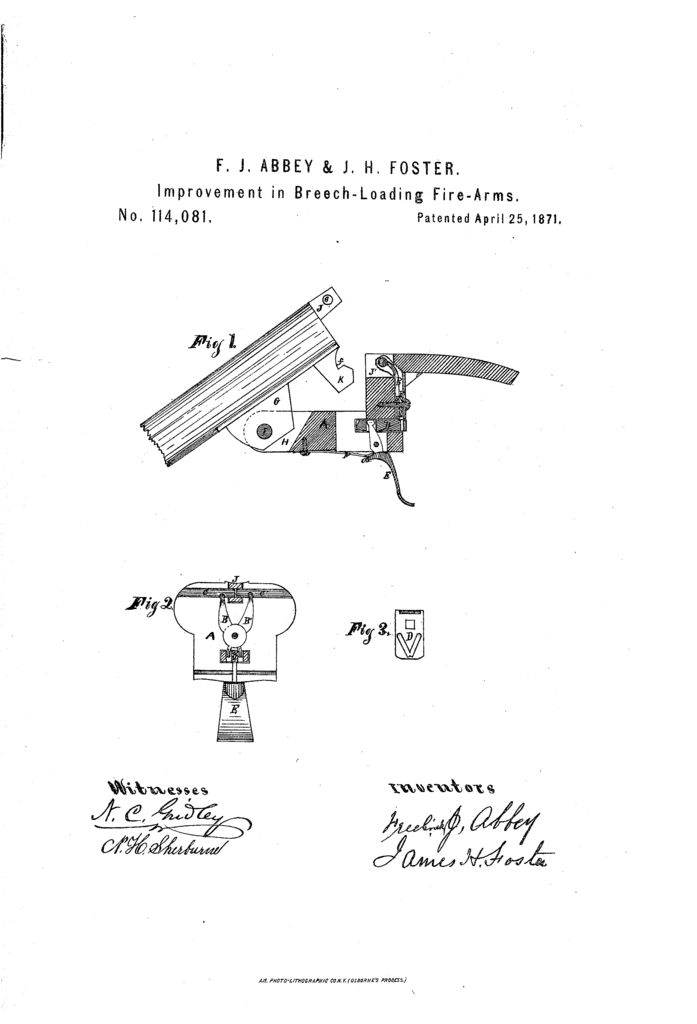"Daryl" & "Eric 375," I believe the origin of your guns' "rising bite," which seems a sort of early bifurcated bolting system, as well as the mentioned Purdey-type push-forward, thumb-operated single under-bolt and 'rising-bite' release, is shown below in the ingenious F. J. Abbey (gunmaker, Chicago, Ill.) & J. H. Foster patent of 1871:

This U.S. patent was granted during the era both the subject guns were built. It also demonstrates that not all the inventiveness in the realm of firearms was concentrated overseas, but did also occur in the United States. This is a mechanical alteration that could have been performed by skilled gunmakers or gunsmiths in the U.S. to sourced action bodies (Abbey, Donn, Schafer, etc.), such as, say, the
W & C Scott or
Isaac Hollis hammer-gun actions sourced from Birmingham, England.
The basic economic reason that even major alterations were often performed during the nineteenth century (and in to the 20th), especially those altering a gun from one ignition system to another, where one system had come successively in to general use and rapidly replaced the former system, was that even highly skilled labor was far less expensive to employ than the cost of materials. For example, if you had an action body suitable for the dated pinfire cartridge and now wanted the latest standard cartridge-firing gun instead, rather than buying a new and expensive gun built especially for the new standard cartridge, the sportsman would likely have opted to have the pinfire gun altered to use the new system. And even though the alteration would have required a lot of skilled labor time to accomplish, it was still less expensive than the materials and work on which the effort was expended. This same logic would have applied when considering upgrading or altering a costly imported action body, as would have occurred in the instant case.
Regards,
Edwardian